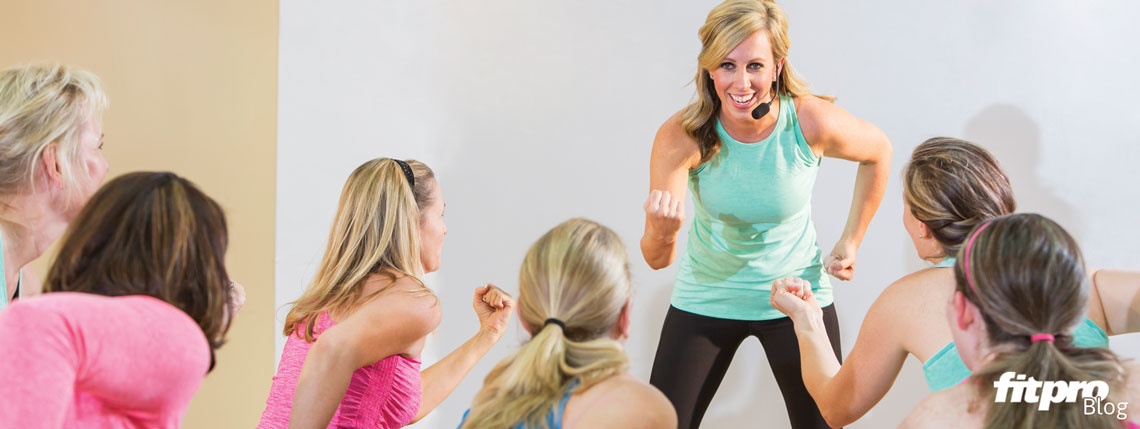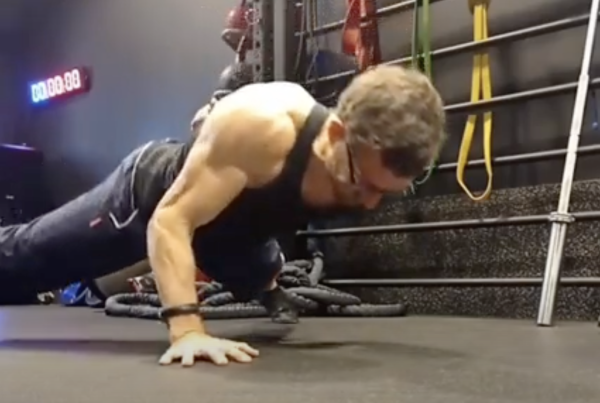Jeremy Fisher is a voice expert, with experience spanning both the theoretical mechanics of the voice and the practical implementation of vocal techniques. He has written a number of best selling books, including This is a Voice and has developed a range of multimedia tools on the subject. He is also a coach on ITV’s The Voice. Here, he details the dangers of repetitive voice injury.
Fitness trainers are meticulous about diet, posture and form, for both themselves and their clients, but they’re at major risk of losing their job because of one thing – they don’t know how to keep their voice in peak condition.
Any fitness trainer needs to be able to communicate with clients and motivate them to improve. If they lose their voice, or even if their vocal quality decreases and their clients go to someone more interesting, they could lose their job. After all, if you can’t speak, you can’t train.
And this is a global problem. Voice researchers are starting to examine the problems of voice and sports training around the world. In Finland, 28% of soccer coaches approached by voice researchers reported sore throats, coughing and voice loss[1]. In Australia, 52% of female aerobics instructors questioned reported voice problems[2]. In France, 320 sports and fitness instructors were questioned on vocal health – a massive 55% reported vocal difficulties related to noise and music, shouting and frequency of classes[3].
Just like any other part of your body, your voice is made up of moving parts, muscles, ligaments and connective tissue. At a conservative estimate, a man’s vocal folds will collide more than 5,000 times a minute in normal speech – for women, it’s double that. Multiply that by the number of hours a fitness trainer works in a day, giving high-intensity classes or motivating a client, and you have potential for voice damage every hour.
There are three big issues for fitness trainers: how they use their breath; keeping a clear sound when they are describing technique; and varying their speaking pitch. There is a key reason why this audience is so at risk of voice problems; one of the ways in which the body gets strength to the limbs is by holding the breath and using an ‘effort closure’.
In your throat you have two sets of vocal folds, true and false. When you make this type of vocal effort closure, your true vocal folds press together, and your false vocal folds move in, tightening your throat and causing extra pressure. This is great for fight/flight moments when you need a burst of strength, but bad for your voice. You can end up with a raspy voice – it may be loud, but with very little flexibility or variety in pitch range.
Many of the trainers questioned in the research projects asked for specific vocal training and vocal damage prevention programmes. So, what can you do to minimise damage, build vocal stamina and keep your voice safe?
Just as you wouldn’t dream of advising someone to start training without warming up, a vocal warm-up will get blood to your vocal muscles and encourage them to stretch and contract safely. Here are three exercises you can use to help give you clarity, flexibility, and refine your vocal form:
- Good blood flow. Start by getting good blood flow to the vocal muscles with small sounds such as mm-hmm, uh-huh. Be very gentle – you’re aiming for small, clear sounds in your vocal ‘comfort zone’. The quiet sounds help your vocal folds to collide gently, and the clear sounds mean they are touching evenly with good form. This might take between 30 seconds and three minutes to get an even, clear tone.
- Release throat tension. Put your hand in front of your mouth and make an ‘h’ sound. You can feel breath flowing gently out of your mouth, and hear the ‘h’ sound. Hold it for five seconds. Then repeat and elongate the ‘h’ (it’s like an extended whisper) and notice the airflow on your hand. Now repeat this, but make the ‘h’ sound completely silent. You’ll still feel the breath flowing outwards on to your hand but you shouldn’t hear anything. Your false vocal folds have moved apart and your throat has widened slightly. This movement is small, but precise. Your aim is to maintain the silent ‘h’ position when you breathe and when you speak, so hold this new feeling/position and breathe in and out silently. To help you achieve this, put your hands over your ears and move between the noisy and silent ‘h’ again. This technique helps you hear internally what you are doing. It might take a few minutes to discover your personal optimum position, but once you are aware of it, you can do this in just one minute.
- Extend your vocal comfort zone. Varying your pitch keeps your clients interested – nothing is more boring than hearing instructions given in a didactic monotonous voice. Start by combining the two previous exercises – keep the silent ‘h’ position and make a few mm-hmm, uh-huh sounds. Again, you’re aiming for small and clear. Start moving your mm-hmm, uh-huh sounds up and down a little, staying in your comfort zone for one minute. Then go a little higher – you’ll be stretching your vocal folds to get them to vibrate faster. Your vocal folds can stretch without any extra pressure. Your aim here is to go briefly above your comfort zone and then drop back into it. You should be aiming for at least an octave in your speaking voice (the opening phrase of Somewhere over the rainbow covers an octave).
Each of these exercises takes just a minute or so to complete and, used daily, they will help to keep your voice safe, so you can concentrate on getting the best out of your clients and they can enjoy listening to you!
To perfect these exercises and more, download the one minute voice warm up app on both iOS and Android:
https://itunes.apple.com/app/one-minute-voice-warmup/id1212802251?ls=1&mt=8
https://play.google.com/store/apps/details?id=co.speechtools.warmup
References
- Fellman, D. Simberg, S. (2016) Prevalence and Risk Factors for Voice Problems Among Soccer Coaches, Journal of Voice, online.
- Newman, C. and Kersner, M. (2009) Voice problems of aerobics instructors: implications for preventative training, Logopedics, Phoniatrics Vocology, online.
- Fontan, L., Fraval, M., Michon, A., Déjean, S., Welby-Gieusse, M. (2016) Vocal Problems in Sports and Fitness Instructors: A Study of Prevalence, Risk Factors, and Need for Prevention in France, Journal of Voice.







